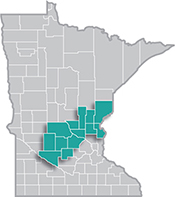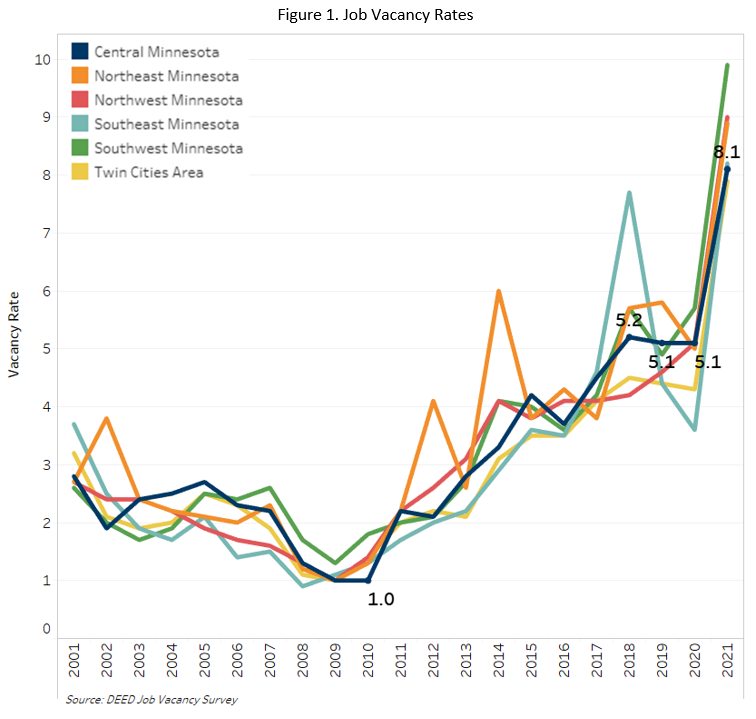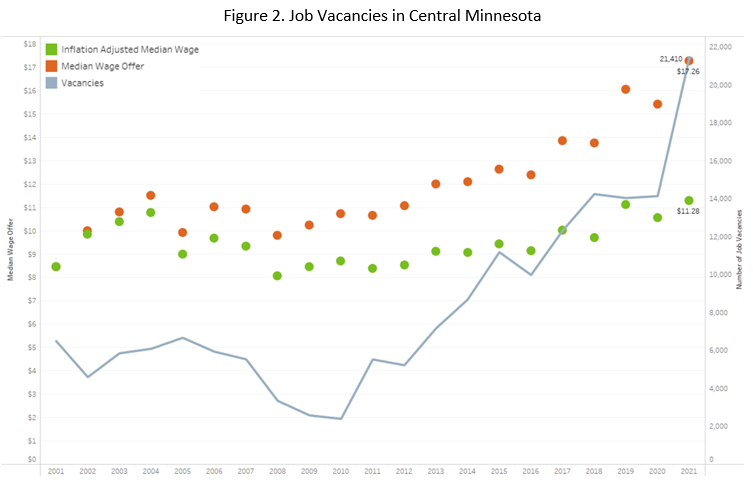 Central Minnesota is a manufacturing stronghold, with several global manufacturing firms operating there.
Central Minnesota is a manufacturing stronghold, with several global manufacturing firms operating there.
The region is especially well known for its expertise in food processing, printing, furniture manufacturing, appliances, machinery and heavy equipment manufacturing.
View our latest blogs on CareerForce. Want the freshest data delivered by email? Subscribe to our regional newsletters.
7/28/2022 9:00:00 AM
Luke Greiner
Employment in Central Minnesota has not yet recovered from the 2-month pandemic recession, but it's not from a lack of job openings. Total employment in Central is still down roughly 10,000 jobs, but there were more than 21,000 vacancies in the fourth quarter of 2021, the period covered by the latest Job Vacancy Survey. If every opening could be filled, the recovery would be complete and the region would actually have grown employment by 4% over the pre-pandemic peak.
However, the large number of workers who left the labor force have shifted job vacancy rates to record highs, nearly double the previous high. Central Minnesota's incredible 8.1% job vacancy rate – the number of vacancies for every 100 filled jobs – illustrates the leverage workers have in the current labor market, yet it's even higher in surrounding regions including Northwest, Northeast, and Southwest Minnesota. The record high numbers of openings combined with a record drop in labor force participants and historically few numbers of unemployed workers means it is basically impossible to fill every opening in the current labor market (Figure 1).

With 21,410 job vacancies in the fourth quarter of 2021, there were 52% more job vacancies than the previous high recorded in 2019. Job vacancies are usually an indicator of a healthy and growing economy, but that correlation relies on the vacancies getting filled by workers. Large numbers of openings are still great news for job seekers and workers looking to make a change, but unfillable vacancies mean economic growth is being held back due to lack of labor.
Thanks in part to the tight labor market, wage growth has accelerated recently, but unfortunately inflation is now at 40-year highs and cutting into wage gains, in many cases completely erasing the raises workers receive. It's a curious situation for workers, as they gain more leverage from a tight labor market and fight for higher wages, their higher wages also contribute to higher inflation. Supply chain restraints are exacerbating this inflationary spiral.
Supply side inefficiencies are driving up inflation while slowing or limiting goods and services that can be sold. Meanwhile Americans everywhere are demanding higher wages to try and keep up with rising costs. The median wage offer for all job vacancies in the fourth quarter of 2021 was $17.26, but after adjusting for inflation the real median wage offer indexed to 2001 was $11.28, just 17 cents higher than it was in 2019 (Figure 2).

Openings are abundant and at or near record highs for most occupational categories. The most numerous openings are for Food Prep & Serving workers (4,417 openings), followed far behind by Production, Sales, Health Care, Transportation, and Construction openings.
Contact Luke Greiner at 320-308-5378.